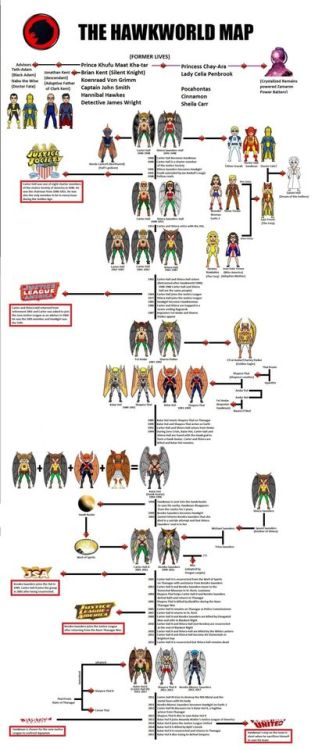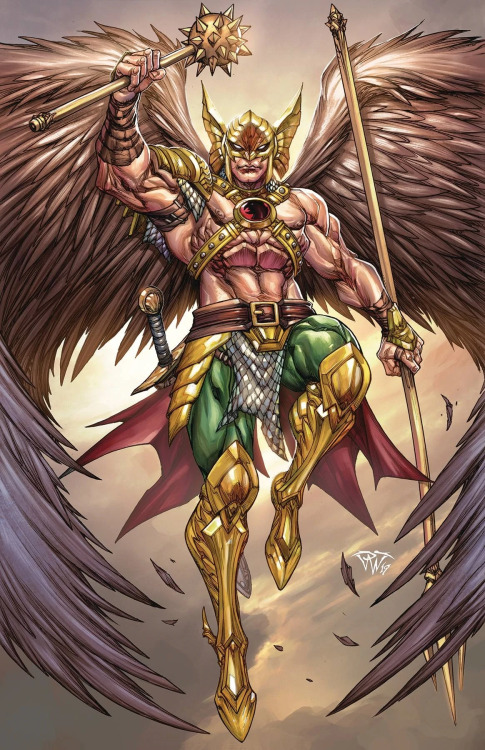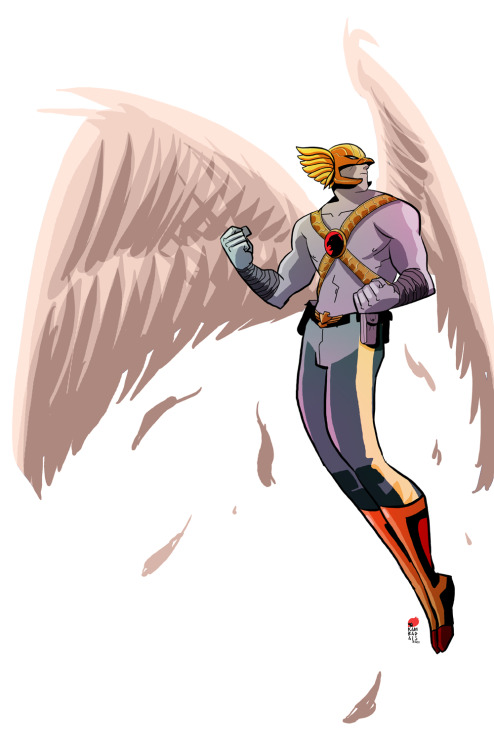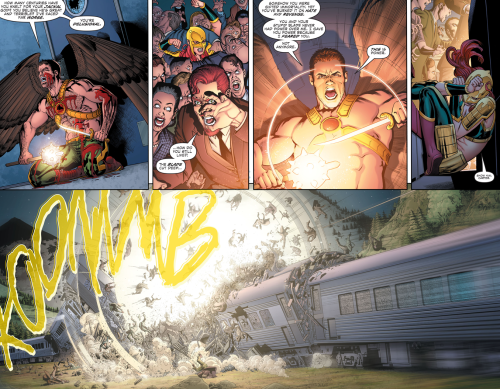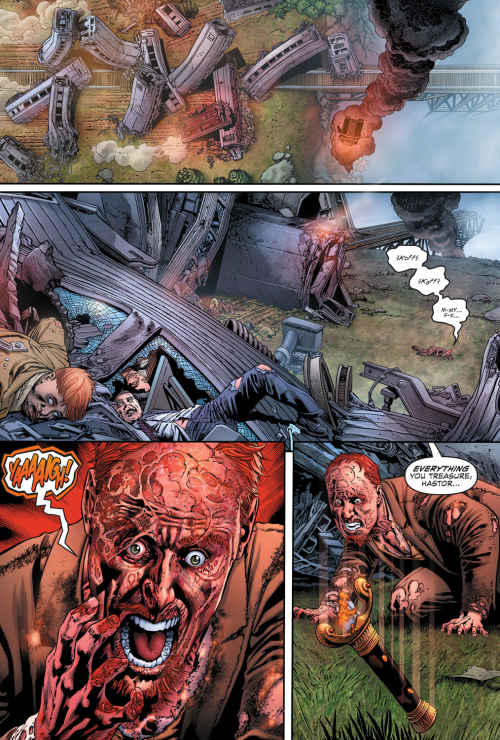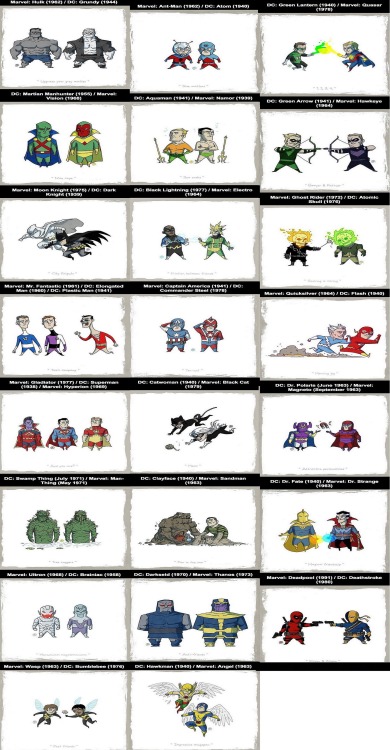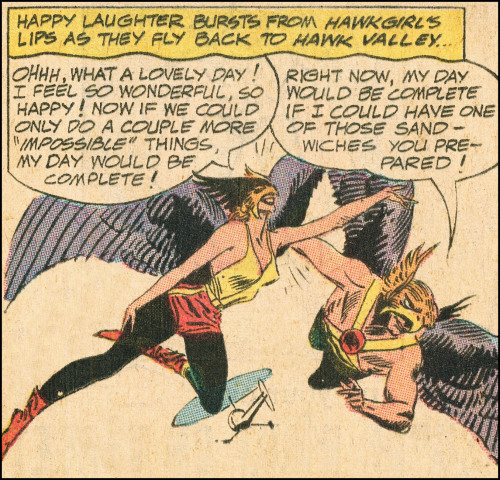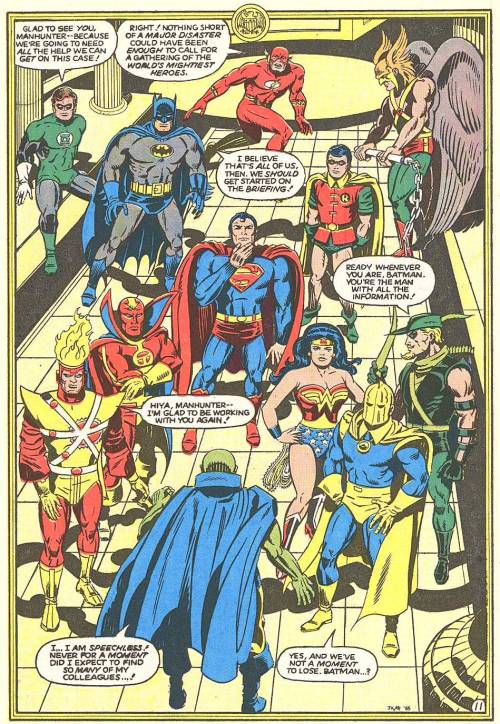#hawkman
This was the first issue of DC SPECIAL to go all-new, and which signaled the end of reprint comics at DC for the time being. There’d still be a few stragglers, but from this point forward, virtually everything the company published in regular comic book form (and even in Treasury format) would be original material. I bought it at the 7-11 because I already liked Captain Comet from the pages of SECRET SOCIETY OF SUPER VILLAINS, so i was happy to see him headlining in another book. His strange co-star, Tommy Tomorrow, I didn’t have any feeling for one way or the other.

One of the big themes throughout the 1970s in comic book publishing was that everybody was looking for the next trend, the next big hit. After the boom of the Batman TV Show-era of the 1960s, super heroes were seen as a genre that was on its last legs and might soon fade away. As a result, there was a sustained rush to find something new that would interest young audiences just as much. Barbarian comics, weird/mystery comics, newish western comics, movie adaptations and continuations, literary adaptations–all sorts of things were tried. As it turned out, super heroes still had plenty of life in them. But all of that explains why this particular issue of DC SPECIAL is devoted to Dinosaurs. Maybe this would be the new hot-button trend that would move units.

For all that, this is still a super hero comic, and it opens with a strange meteoroid tearing across the cosmos both in 1977 near the Justice League satellite and simultaneously in 2056 in deep space, where Tommy Tomorrow is returning from an assignment. The meteoroid tears a gash in the fabric of time and space, drawing Tommy’s craft into the past and also getting the attention of Hawkman and Captain Comet, who are hanging out on the JLA satellite on monitor duty. The meteoroid further makes its way back to 100,000,000 BC, and the rift it’s created allows the dinosaurs living in that era to pass into the present day of 1977.

Back in the past, the radiations from the downed meteoroid mutate one of the native dinosaurs into the advanced humanoid Tyrano Rex, who proclaims the rock from space to be his god. Recognizing that their craft has been pulled into the past, Tommy Tomorrow and the Doctor he was escorting to treat a desperate plague situation in the Vega system head out to try to locate the meteoroid and work out a way to get home. They cross paths with Tyrano Rex, who orders his dinosaur brethren to attack them. All Tommy has is a handgun, and its charge will be depleted eventually, but it’s enough to fend off their attackers.

In the present, Hawkman leaves Captain Comet to hold down the fort while he ventures forth to rescue civilians imperiled by the dinosaurs. Comet uses the JLA monitors to check in on how other heroes are doing around the globe, and sees Chronos in front of a huge time portal. Thinking him a fellow hero, Comet streaks to his aid, figuring that the portal must be where the dinosaurs are coming from. He and Chronos fight side-by-side, and Comet’s mental telepathy tells him that Chronos is no hero, and that he’s actually responsible for this whole situation. Comet goes to try to close the portal, but Chronos intercedes–he’s after the meteoroid, too,and needs the portal to remain open until he can retrieve it for himself.

Back in the past, Tommy and the Doctor run the gantlet of savage dinosaurs, making their way back to their ship. They’ve seen the portal on their side, and realize that it’s the key to getting back to their own era. They direct their ship to fly towards the portal, and scoop up the meteoroid as they pass it, to power their journey back to the present. Unfortunately, they also get Tyrano Rex, who clings to his god-rock even as it is stolen.

So it’s a dual race, as Tommy and the Doctor try to hold off Tyrano Rex until their ship can get back to the future, while the time-corridor is closing because of Captain Comet’s efforts in 1977. The end result is that the ship, the meteoroid and Tyrano Rex all wind up coming through the portal in 1977. Tyrano shouts his claim over the rock, which tees Chronos off, and as the time-thief tries to get it away from the intelligent dinosaur-man, his shots go awry and wind up pulverizing the meteor.

Unfortunately, this causes Tyrano Rex to revert to his original dinosaur state, right in the middle of the city. Tommy uses his space-gun to distract the beast so that Comet can get the drop on him, and then summoning all his power, hurl him back through the closing portal. Meanwhile, his prize now lost, Chronos attempts to sneak away, but Tommy gets the drop on him, and holds him for Captain Comet (who he recognizes from the history books.) And then, in a short epilogue set back on the JLA satellite, Superman shows up, ready to take Tommy and his ship back to 2056 in plenty of time to avert that outbreak of plague. Hawkman and Captain Comet even get in a bit of good-natured ribbing.

Writer Bob Rozakis also contributed an amusing text page outlining how the story and project came about. There was also an uncredited history of Tommy Tomorrow text feature that looks to me like it could have been done either by editor Paul Levitz or, again, Rozakis. Apparently, this issue didn’t sell particularly well, as there were no further dinosaur-themed specials, nor for that matter solo stories featuring either Captain Comet or Tommy Tomorrow, not for a good while.
Post link
In January of 1977, I turned ten-years-old. And around that time, I would up getting my second book collection of vintage comic book stories–a book that, up until that point I didn’t even know existed. We found it in the remaindered section at Two Guys, a regional low-rent department store chain, kind of like the K-Mart of its day. And because I had money that had been given to me for my birthday, I was able to buy it. By that point, it was twelve years old and had gone through several printings–it was, in fact, the very first collection of vintage comic book stories ever published, coming out in 1965 just ahead of the Batman TV show craze.
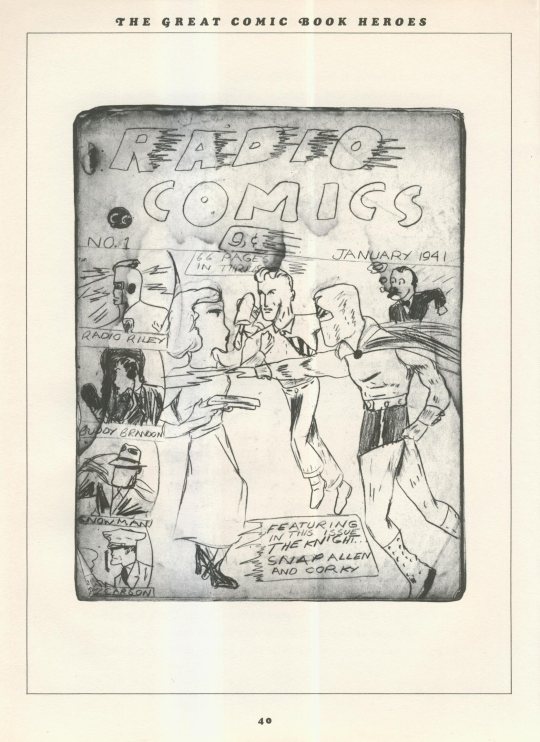
THE GREAT COMIC BOOK HEROES began life as an article that Jules Feiffer had written for Playboy magazine, of all places. It was a nostalgic look back, warts and all, at the comic books that were a part of his youth and the state of the industry a few years later when he was able to get into the business working for Will Eisner. From there, Feiffer went on to be a successful syndicated cartoonist, his strip primarily appearing in the Village Voice, as well as an accomplished playwright. He was so well-regarded, in fact, that he was able to convince a number of publishers to reprint stories from their back catalog in this hardcover collection–publishers who, up to this point, has never really worked in concert before.
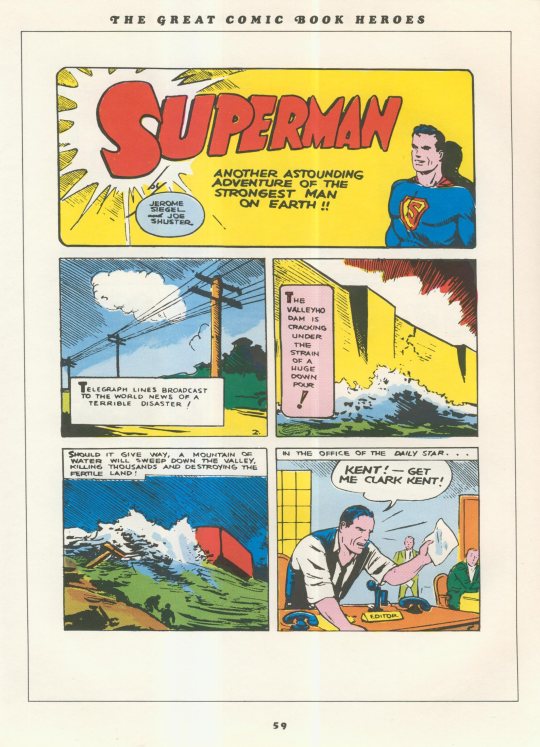
As no good reproduction materials existed, Feiffer worked in concert with DC’s Jack Adler to pioneered a process by which old comic books could be photographed under certain conditions to create a usable black line image, and then recolored. This same process was later used on many of DC’s reprints, in particular the FAMOUS 1st EDITION treasuries–I gather that the reason its use wasn’t more widespread is that it was more costly and time-consuming than was considered worthwhile for a regular comic book release.

Feiffer was also enough of a bigwig in 1965 that he was able to negotiate a minor detente in the legal agreement between DC/national Periodicals and Fawcett Publications, enough to allow him to reprint a single page’s worth of Captain Marvel. In 1977 when I read this book, I didn’t understand why this was a big deal (and in fact I had read this same story twice before already.) I believe it was the one and only exception ever granted, at least up until the point where DC began licensing the rights to Captain Marvel from Fawcett in 1973.
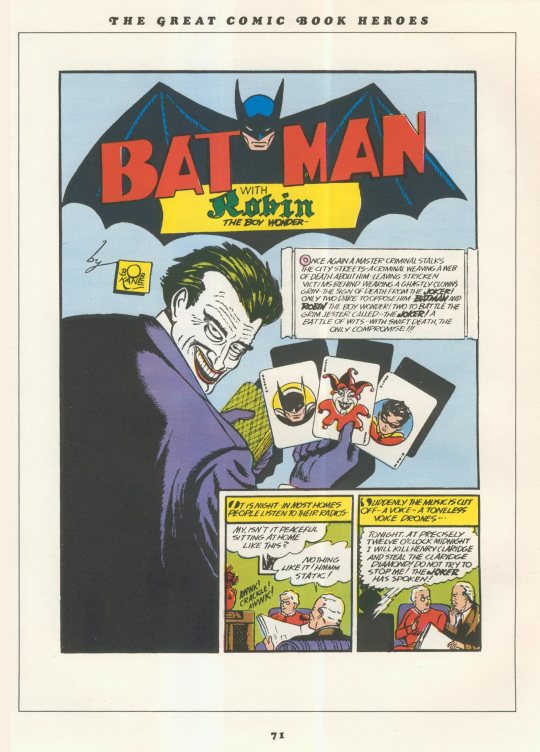
I will confess that, when I first bought this volume, I didn’t read any of Feiffer’s text. That seemed like work to me, who needed it? It was the stories that I was here for! I was hypnotized by the reproduction of one of the comic books that Feiffer had made and sold on the neighborhood street when he was a kid. I had begun to make my own comic books before this, and so this was a very primal point of connection for me–I think I may have read the text of just that one “chapter” (they were all short enough that they were only three or four pages long.)
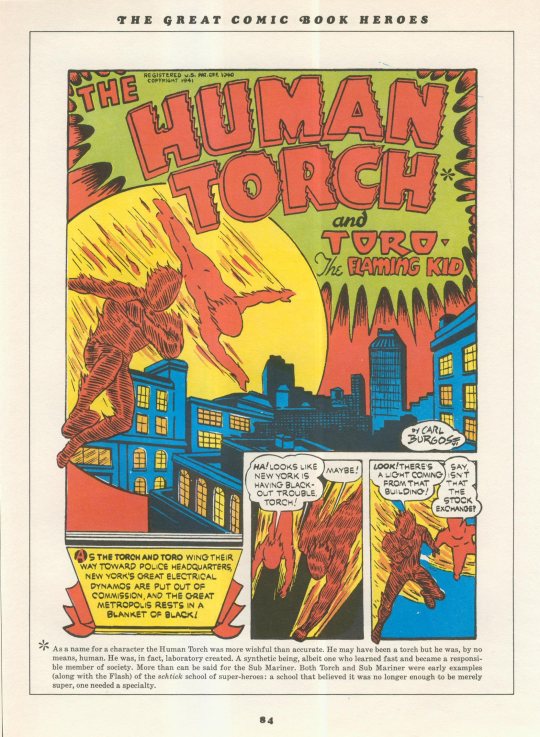
I also didn’t read the stories featuring the Human Torch, the Sub-Mariner and Captain America that were included in the volume. Why would I? I had learned from past experience that I adamantly disliked Marvel comics, decried them whenever I was asked about them, so there was no need to investigate these stories. It would literally be months, not until the summer of 1977, when, on one dull day with nothing better to do, I finally cracked and read through both Feiffer’s full text and the three Marvel stories. And they (along with the write-ups on Timely in the Steranko History of Comics, coming soon) were enough to compel me to give Marvel another chance. But we’ll get to that in due time.
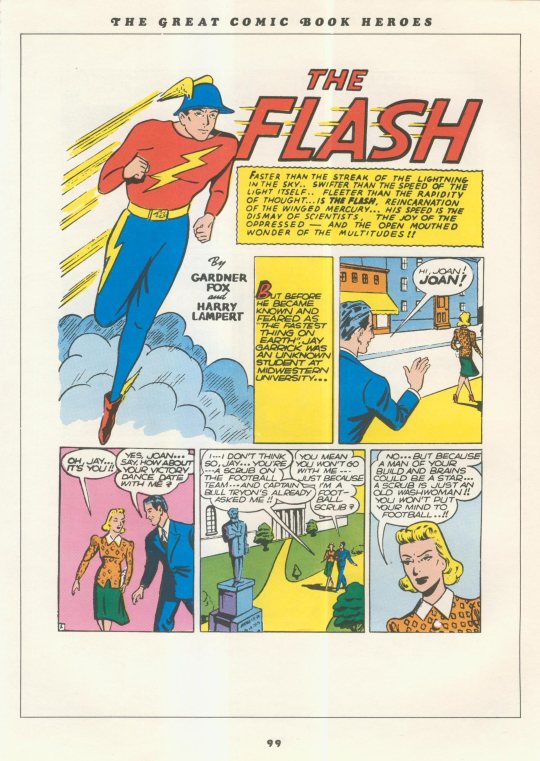
The one disappointing aspect of Feiffer’s book to me, coming to it twelve years later, is that there were already a number of stories in it that I’d read already. Because Feiffer tried to hit all of the mainstays of the big comic book houses in his reprints, and as often as possible, the opening or origin installments. The only times he varied from this approach was when there was some other aspect of the character or the strip that he was trying to highlight–a number of these series took a little while to completely crystallize in their final forms, and Feiffer took that into account when choosing his stories.
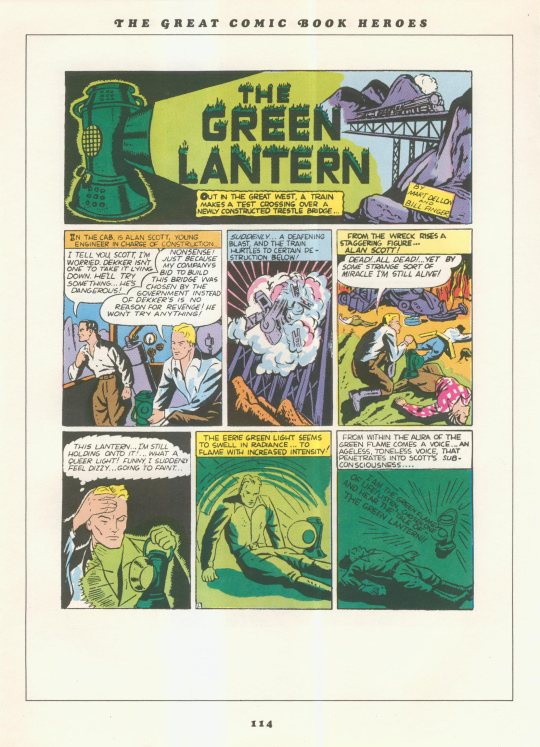
So what was reprinted in this volume? It opened with a two-page origin of Superman, taken not from ACTION COMICS #1 but rather from the more expanded version first shown in SUPERMAN #1. Thereafter, he ran a story that he sourced from SUPERMAN #3 but which was first published in ACTION COMICS #5. It’s really the first full story in which all of the quintessential elements of the Superman series coalesce: the Lois-Clark-Superman relationship in particular. There are several pages in the middle of it that were clearly reworked from newspaper strip samples, panels extended and reformatted into comic book pages haphazardly.

Following the single page of Captain Marvel he could show, Feiffer then reprints the origin of Batman, from BATMAN #1 (which I’d read), as well as the first story featuring the Joker (likewise). This was about a year in, by which point Robin had been introduced, and wit the debut of the Joker all of the elements were in place. But not new to me. Next was a relatively late Human Torch story from MARVEL MYSTERY COMICS #20–like Batman, by this point the Torch’s young partner Toro had come into the series, and it had settled down into typical super-heroics. But I didn’t read it, not yet.

A pair of stories that I’d already experienced came next: the first adventure of the Flash (my third copy of it!) from FLASH COMICS #1 and the first installment of Green lantern from ALL-AMERICAN COMICS #16. Next came a solo Spectre story from ALL-STAR COMICS #1. I was familiar with this early version of the Spectre from the FAMOUS 1st EDITION reprint of ALL-STAR #3, but he wasn’t especially interesting to me. Because he was already dead and could do literally anything, there wasn’t a lot of drama to be found in his stories. Even as a kid, this deficit was apparent to me. Superman, at least, had to struggle to accomplish whatever his goal was.
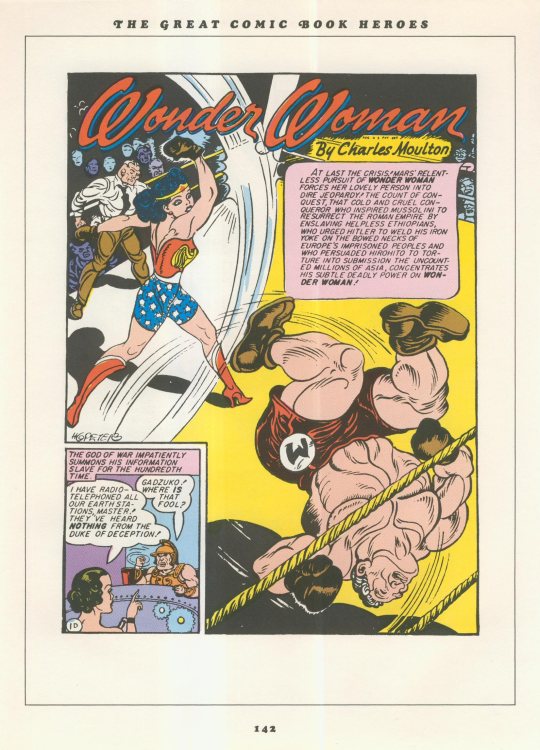
Next came an adventure of Hawkman, sourced from FLASH COMICS #5. Here, Feiffer skipped the earliest adventures of the winged wonder so as to showcase the work of Shelly Moldoff on the strip (and in particular how often he was swiping Flash Gordon panels by Alex Raymond, which happened everywhere.) This was followed by a Wonder Woman story from WONDER WOMAN #2–actually, it was a single chapter of a four-chapter larger story, but I wouldn’t discover this for decades. Feiffer chose it as a good example of some of the strange sexuality that was operating under the hood of what at first glance appeared to be a patriotic heroine series. This was the stuff that really made Wonder Woman sizzle, and the lack of which one of the reasons why her series had such a lack of pop in the 60s and 70s.

Then came a Sub-Mariner adventure from MARVEL MYSTERY COMICS #7, by which point creator Bill Everett had worked out the bugs. I didn’t read it for several months, but essentially it’s an orgy of destruction, as Namor returns to Manhattan to carve out vengeance for his undersea race by wrecking and destroying his way across the city–he even at one point accosts Mayor Fiorello LaGuardia. There isn’t much plot, only carnage–and it ends with Namor’s friend Berry Dean warning him that the Human Torch would be on his trail. But that historic meeting wasn’t included.
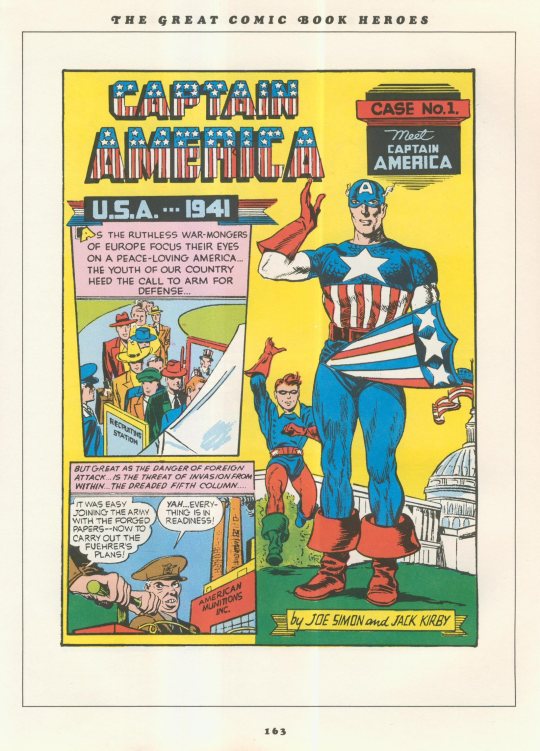
I also skipped the origin of Captain America, from CAPTAIN AMERICA COMICS #1. It’s a pretty crude piece of work, like most of what was reprinted in this volume. There are only hints of the explosiveness that Jack Kirby would bring to the comic book page in the next few issues, to say nothing of the next few decades. The pages were a little bit more jigsaw puzzle-y, but only a little bit. That would change as Kirby got going on Cap.

Next came the first Plastic Man adventure, from POLICE COMICS #1, and which I’d read a few weeks earlier in SECRET ORIGINS OF THE SUPER DC HEROES. It was still a fun tale, but one that only hinted at the inventiveness that Jack Cole would bring to the character and to the page. I felt the same way about the Spirit based on the story that Feiffer reprinted here. He spent a lot of time talking up how innovative and impressive a series it was, but from this sampling, I just couldn’t see it. Part of that, no doubt, is that most scholars consider the best period of Eisner’s Spirit to run from around 1946-1950 or so. But Feiffer was working for Eisner for most of that period–he wrote several of the most memorable tales–and so his interest was in the earliest Spirit adventures, the ones he read as a kid.
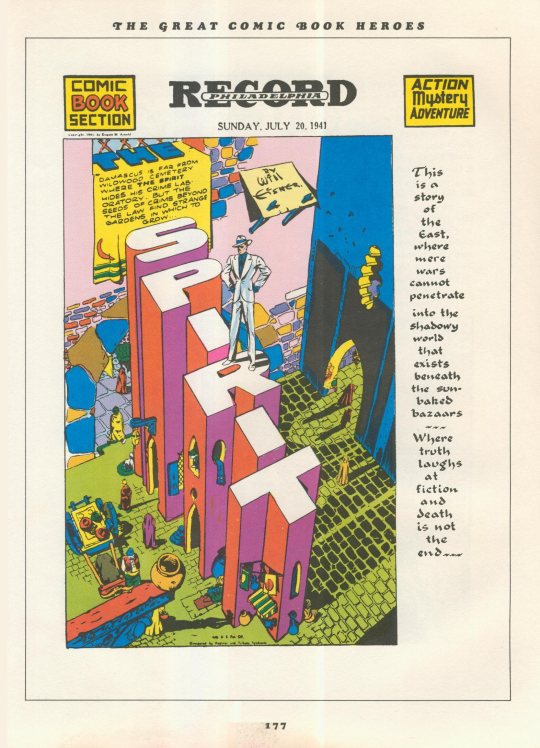
So it was a highly-enjoyable volume, and one that would have a greater impact on me over the course of time, but also slightly disappointing. But I was glad to have it, in particular because its existence came as a total surprise to me. At this point in time, there were precious few compilations of old comic book stories, so each one was like a treasured gem.
Post link
It was an unimaginable 41 year ago today, on Christmas day of 1976, that I finally got my hands on this much-desired beauty, a gift from Santa Claus. And actually, having asked for it specifically on the Christmas list that my mother would demand that each child write (usually sourced out of the Sears Christmas catalog, with an upper cap of $40.00 total), I wound up finding it among other gifts secreted away in our as-yet-unfinished attic, so I knew that it was coming at last.

To say that it was a treasure trove is underselling the situation. It’s unthinkable today, when so much classic material is readily available, either collected in book for or simply available digitally, but in the mid-1970s there wasn’t any way to read old comic book stories that you were interested in other than to find those old comics, or stumble across those stories being reprinted somewhere. So it was extremely difficult for a nine-year-old to make sense of the history of comics, as I was eager to do. Books like this one were invaluable and loved. Indeed, my original copy of this volume is in pieces, the cover and earliest pages having eventually fallen off–I had the paper cover edition, not the more expensive clothbound one. (I couldn’t for the life of me work out why anybody would spend the larger amount when they could have used that money to buy more comics. I get it now.)
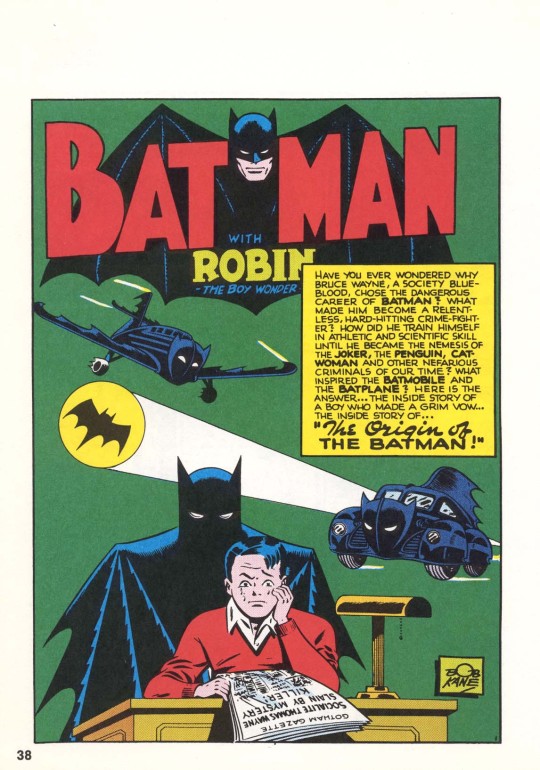
SECRET ORIGINS OF THE SUPER DC HEROES was the follow-up to Crown Books’ successful collections of vintage Superman and Batman stories. But it was really a reaction to Simon & Shuster’s ORIGINS OF MARVEL COMICS and its profitable follow-ups. Carmine Infantino and DC certainly wanted a piece of that marketplace (even if Carmine would be ousted as DC’s Publisher by the time the final product reached the marketplace in mid-1976). So the book is structured remarkably similarly to ORIGINS, with chapters devoted to ten DC heroes reprinting their origin stories (in most cases, two different ones from over the years) and introductory chapters written by Denny O’Neil outlining the behind-the-scenes story as to how these characters came to be.

Sadly, Denny is many wonderful things, but he’s not Stan Lee, so his secondhand recountings aren’t as engaging or fun to read as Stan’s–they read more like a homework assignment. It’s mostly the editors that Denny speaks to and who comment on the genesis of these heroes, and while they’re appreciative of the gainful employment such characters have provided them, you can’t help but get the feeling that it was all just a job to these guys.

Remarkably, the introduction to the Superman chapter speaks of Jerry Siegel and Joe Shuster, at a time when their byline was still stricken from the rolls at DC–this is notable in that, in that previous Superman collection that Crown had published years earlier, neither man was mentioned by name. Similarly, the Batman chapter talks about Bill Finger as well as Bob Kane–in fact, it mentions Finger’s name first. This was an extraordinary thing in 1976, and something that DC would walk back for at least a few more months on Jerry and Joe’s side, and for decades longer when it came to Finger. Whether this was due to Denny, or a desire to give a true accounting so as to mimic ORIGINS (whose accounting is far more compromised), it almost doesn’t matter.

The book also bridged the gap between the Golden Age and the more modern Silver Age, the Earth-1 and Earth-2 incarnations of the characters. In all but the final two instants, two stories were run featuring each character: their initial Golden Age appearance (or origin, in the case of Batman and Wonder Woman) and then either a more recent retelling or updating of that origin, or the origin or first appearance of the Silver Age incarnation of that hero. So you got Jay Garrick along with Barry Allen, Alan Scott besides Hal Jordan, and Al Pratt as well as Ray Palmer.
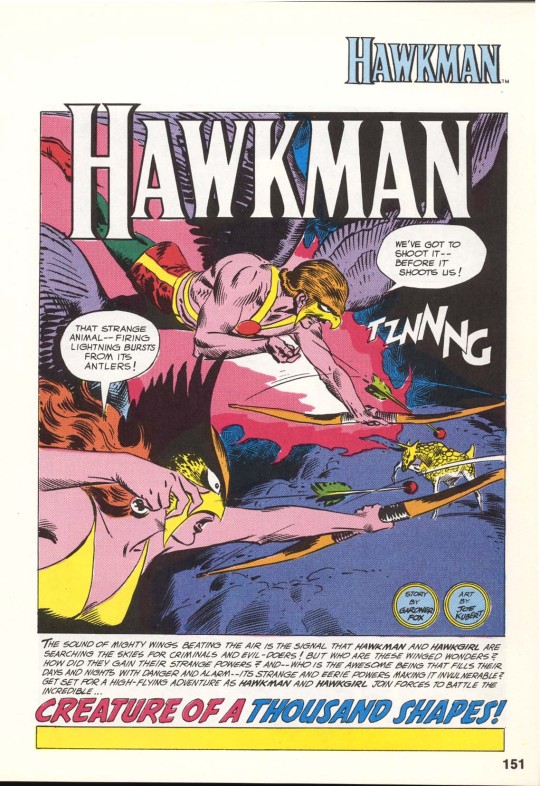
So, just walking through the volume a little bit, after some introductions and dedications (Sheldon Mayer!) it gets down to business with Superman, starting with a reprint of the first page of his initial story in ACTION COMICS #1 (which I’d already seen in the FAMOUS 1ST EDITION reprinting) followed by the expanded Origin of Superman from the AMAZING WORLD OF SUPERMAN special edition–this one I’d also previously read, in a SUPERMAN treasury Edition.

This is followed by the origin of Batman from BATMAN #1 (I’d read it) and then the well-regarded 1948 story in which Batman tracks down Joe Chill, the man who had killed his parents. It’s a story that packs a punch. Next came Wonder Woman, whose origin from the first issue of her comic was reproduced (Again, I’d read it in reprint before) followed by a more modern recounting by Robert Kanigher and Don Heck that also built up the mystery of Nubia, Diana’s long-lost sister.
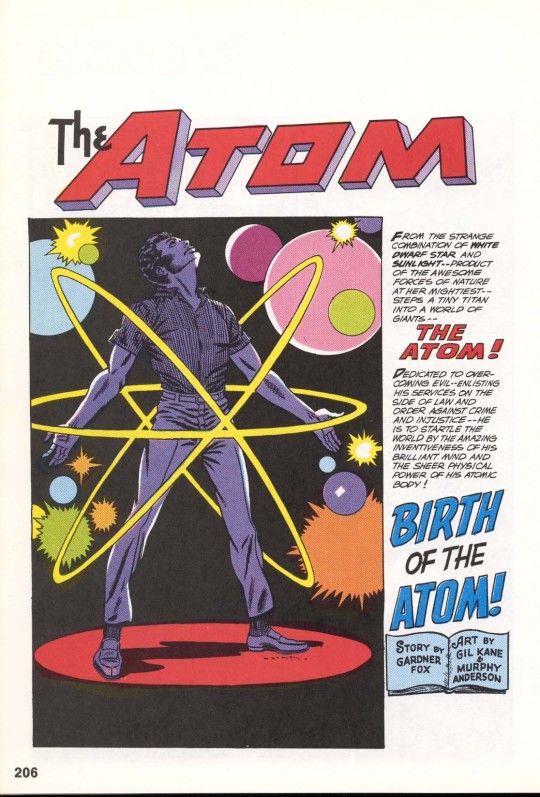
Then came the main event, the reason I had jonesed over this volume for so long: the origin of the Flash. It began with a reprint of the first Jay Garrick story (read it already!) and then reprinted the inaugural Barry Allen story from SHOWCASE #4. And I loved it, boy, every nonsensical second of it. This was followed by the first Green Lantern story, featuring Alan Scott–Scott doesn’t don his costume until the very last panel in this story, which was a bit disappointing–and then the first Hal Jordan tale (in which he does wear his costume, but no mask yet.) The fact that so many of DC’s characters had debuted in anthology titles, and so their stories were shorter than their Marvel competitors made it easier to fit more stories into a single volume.
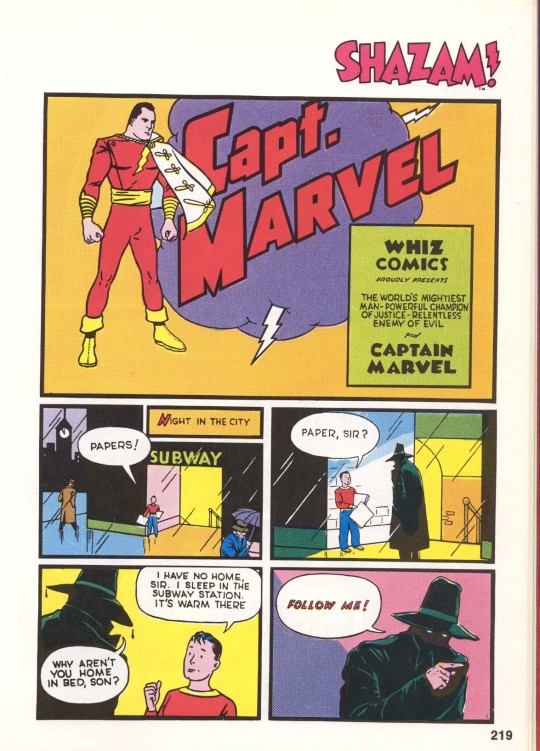
Then came two Hawkman origins (I’d read the first in the FLASH COMICS #1 Treasury, but not the Silver Age story) and a pair of Green Arrow stories, neither the Emerald Archer’s first appearance but both detailing contradictory origin stories for his costumed identity and mastery of the bow. I naturally concluded that the first must be the Earth-2 Green Arrow, which turned out to be true. The Atom came next, and he never even got a costume in his initial outing as Al Pratt, nor did Ray Palmer in his initial story. Still, these were all fun and inventive.

The final two slots in the book were devoted to DC “acquisitions” that had originated elsewhere. So next came the first Captain Marvel story from WHIZ COMICS #2 (the first issue had been an ashcan–and I’d read this story when #2 was reissued as a FAMOUS 1ST EDITION) and the first Plastic Man yarn from POLICE COMICS #1. This book is a treasured favorite, and I’ve replaced it twice over the years. It was also the start of what became a long Christmas tradition in which I would be given books on comics by my family, friends and relatives. And so it was a merry Christmas indeed.
Post link
Hawkgirl: ‘’You are talking to someone locked in an immortal chain of reincarnation. I get it Smarthphones are weird’’
Justice League Annual #1 (2016-)
Post link
Watch “The World Needs Heroes | DC” on YouTube

Nothing like the Original Super Team
Val Semeiks
Hawkman #29 - “The End” (2020)
written by Robert Venditti
art by Fernando Pasarin, Oclair Albert, & Jeromy Cox
Post link
I kinda wish they had made the Invincibros team more diverse. As it stands most of them are White and the one who could be read as a POC does not speak in the show. I feel like it would have been better if they choose John as the other Green Lantern rather than using Hal again or if they would have had Vibe, the Atom (Ryan) or Blue Beetle on the team.
Post link
This is Hawk’s ship from the TV series Buck Rogers in the 25th Century.
But Hawkman beat him to the punch with this beauty:



I want a model and/or toy of Hawkman’s ship, please!
Post link
All-Star Squadron Roll Call from All-Star Squadron #31, March 1984. Art by Rick Hoberg and Mike Machlan, written by Roy Thomas.
Post link
Splash page from Super Powers (volume 2) #1, September 1985, by Jack Kirby! This was my first comic I bought as a kid- from the little grocery I’d ride to on my bike.
Post link
House ad from the interior covers of various DC Comics in 1962 announcing these classics! Thought this would be a good way to start the blog!
Post link




